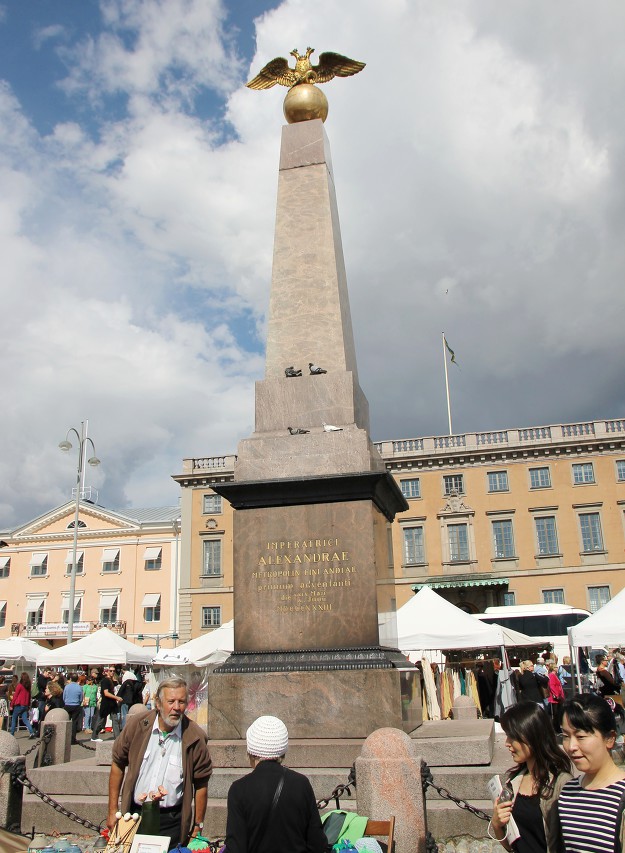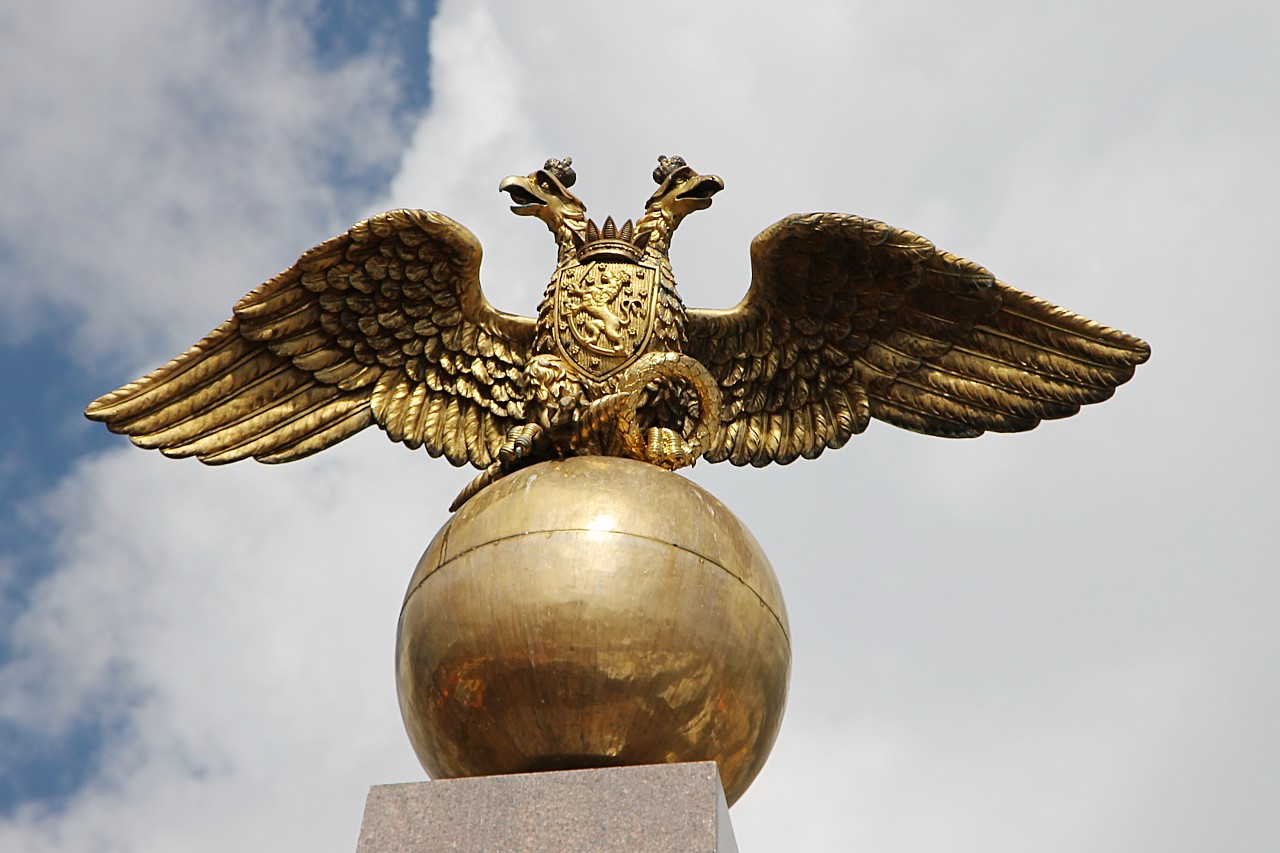Obelisk of Empress, Helsinki
Kauppatori square is decorated with a granite monument called the "Obelisk of the Empress" (Finnish Keisarinnankivi). On June 10, 1833, Helsingfors was visited by the wife of the Russian Emperor Nicholas I, Alexandra Feodorovna. On December 18, 1835, this memorial sign was erected on the spot where the steamer from St. Petersburg docked and the Empress first set foot on Finnish soil. On the front side of the pedestal is carved an inscription in Latin, informing about this event. On the back of the pedestal, this text is duplicated in Finnish, which is unprecedented for that period, since the Official languages of the Principality of Finland were Swedish and Russian.

In the nineteenth and early twentieth century, Helsigfors was the base of the Russian Baltic fleet, in February 1917, a revolution took place in St. Petersburg, and on April 17, Russian sailors knocked down the inscriptions from the pedestal and threw a bronze ball with a double-headed eagle from the top of the obelisk, breaking one of the wings. However, this symbol of autocracy was surprisingly preserved and in 1971 it was restored to its former place. Interesting fact: before that, the Finnish authorities asked the Soviet government whether there would be any objections to the revival of the monument, which symbolizes the tsarist regime.
